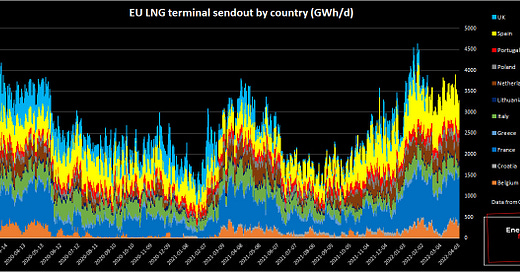Europe’s dash to replace Russian gas has triggered a mad rush to build out new LNG import terminals. A surge in LNG imports in January raised concerns around the EU’s capacity to accommodate further major increases envisaged by the EU Commission to offset Russian molecules. A closer look at the utilisation of existing terminals confirms pinch-points are…
© 2025 Energy Flux Limited, London EC1N 8DX
Substack is the home for great culture




